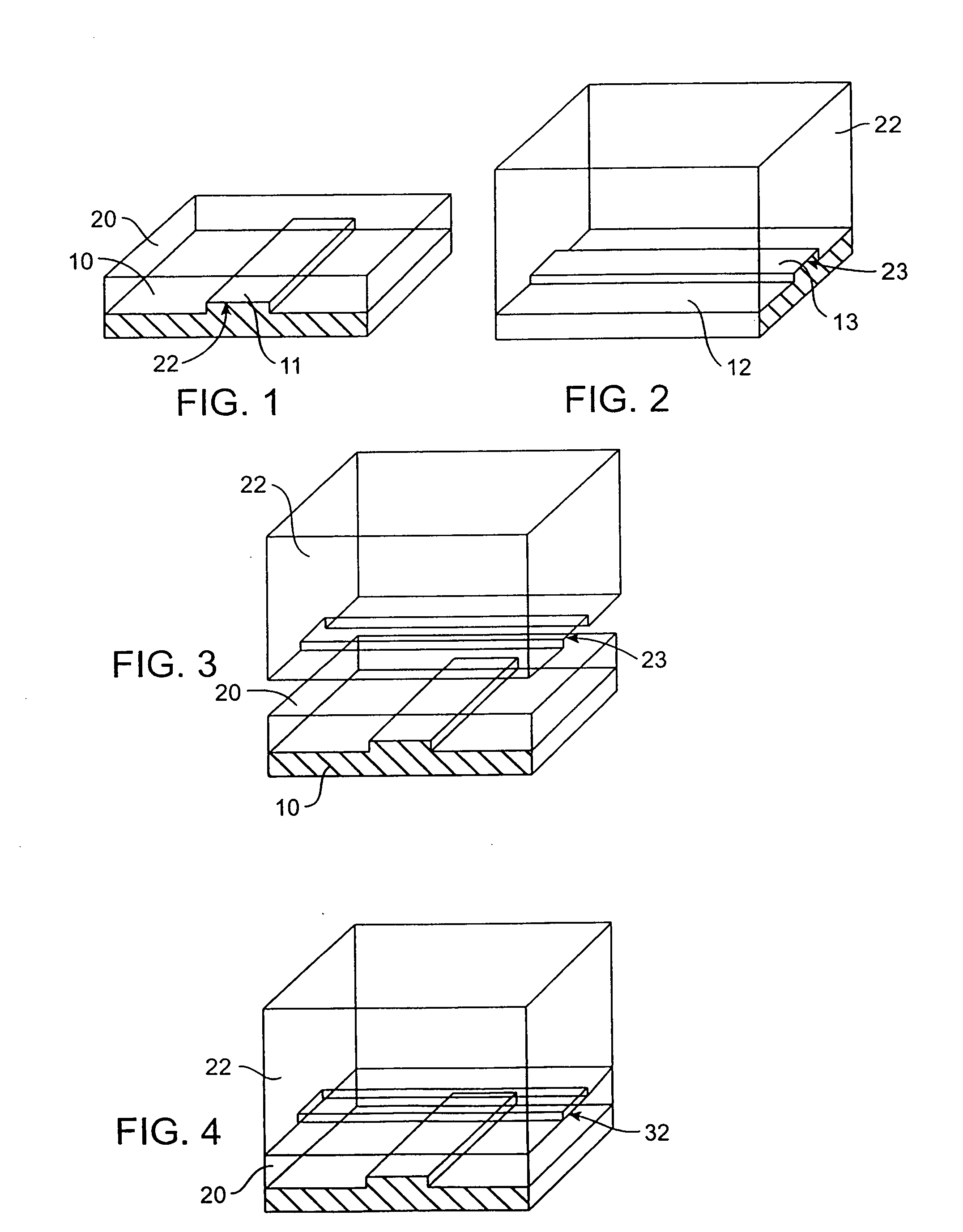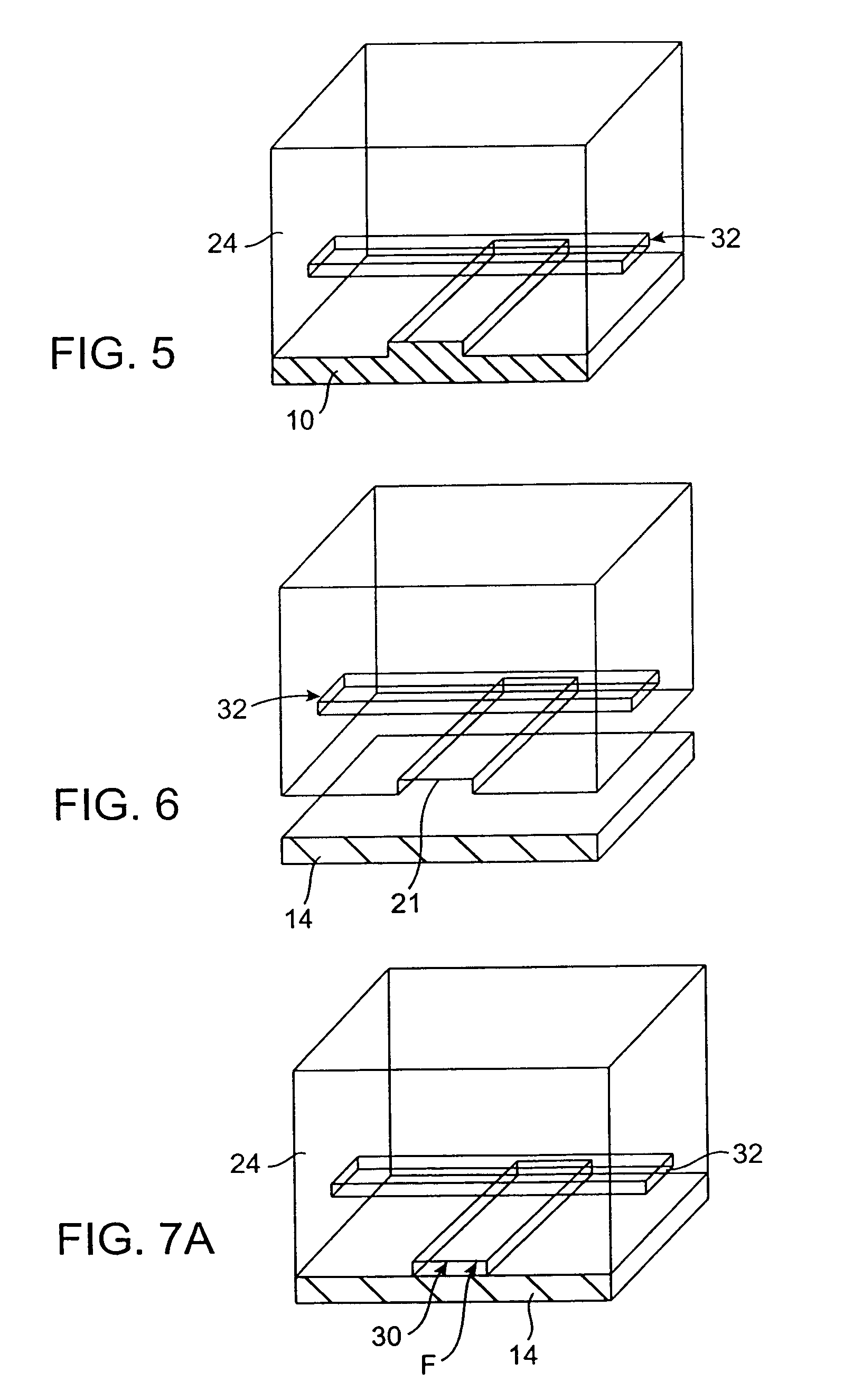Microfluidic free interface diffusion techniques
a microfluidic and free interface technology, applied in flow mixers, apparatuses with spatial temperature gradients, chemical vapor deposition coatings, etc., can solve the problems of unsuitable high-throughput screening applications of conventional macroscopic free interfaces, poorly defined fluidic interfaces, and widely used in crystallographic communities, etc., to achieve the effect of suppressing convective flow
- Summary
- Abstract
- Description
- Claims
- Application Information
AI Technical Summary
Benefits of technology
Problems solved by technology
Method used
Image
Examples
Embodiment Construction
[0098]Portions of the prior discussion have referenced the use of microfluidic structures to accomplish free interface diffusion in accordance with embodiments of the present invention. The following discussion relates to formation of microfabricated fluidic devices utilizing elastomer materials, as described generally in U.S. patent application Ser. No. 09 / 826,585 filed Apr. 6, 2001, 09 / 724,784 filed Nov. 28, 2000, and 09 / 605,520, filed Jun. 27, 2000. These patent applications are hereby incorporated by reference.
I. Microfabricated Elastomer Structures
[0099]1. Methods of Fabricating
[0100]Exemplary methods of fabricating the present invention are provided herein. It is to be understood that the present invention is not limited to fabrication by one or the other of these methods. Rather, other suitable methods of fabricating the present microstructures, including modifying the present methods, are also contemplated.
[0101]FIGS. 1 to 7B illustrate sequential steps of a first preferred ...
PUM
| Property | Measurement | Unit |
|---|---|---|
| width | aaaaa | aaaaa |
| volumes | aaaaa | aaaaa |
| widths | aaaaa | aaaaa |
Abstract
Description
Claims
Application Information
 Login to View More
Login to View More - R&D
- Intellectual Property
- Life Sciences
- Materials
- Tech Scout
- Unparalleled Data Quality
- Higher Quality Content
- 60% Fewer Hallucinations
Browse by: Latest US Patents, China's latest patents, Technical Efficacy Thesaurus, Application Domain, Technology Topic, Popular Technical Reports.
© 2025 PatSnap. All rights reserved.Legal|Privacy policy|Modern Slavery Act Transparency Statement|Sitemap|About US| Contact US: help@patsnap.com



